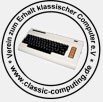The oscillator won't start. My suspicion was that the extended fuse bit's are not set correctly as the TL866 GUI has no options for the lower 5 bits.
I've set up a Dragon as Parallel Programmer for the Atmega328p:
Programmer Type : DRAGON_PP
Description : Atmel AVR Dragon in PP mode
Vtarget : 5.0 V
SCK period : 8.00 us
Writing | ################################################## | 100% 14.91s
avrdude: 17942 bytes of flash written
avrdude: verifying flash memory against sdisk2.hex:
avrdude: load data flash data from input file sdisk2.hex:
avrdude: input file sdisk2.hex contains 17942 bytes
avrdude: reading on-chip flash data:
Reading | ################################################## | 100% 14.48s
avrdude: verifying ...
avrdude: 17942 bytes of flash verified
avrdude: safemode: lfuse reads as DE
avrdude: safemode: hfuse reads as D9
avrdude: safemode: efuse reads as FF
avrdude: safemode: Fuses OK (E:FF, H:D9, L:DE)
I am not able to set the efuse to 0x07 as required, not with TL866 not with Dragon-ISP or Dragon-PP...
avrdude: AVR device initialized and ready to accept instructions
Reading | ################################################## | 100% 0.15s
avrdude: Device signature = 0x1e950f (probably m328p)
avrdude: safemode: lfuse reads as DE
avrdude: safemode: hfuse reads as D9
avrdude: safemode: efuse reads as FF
avrdude: verifying efuse memory against 0x07:
avrdude: load data efuse data from input file 0x07:
avrdude: input file 0x07 contains 1 bytes
avrdude: reading on-chip efuse data:
Reading | ################################################## | 100% 0.05s
avrdude: verifying ...
avrdude: verification error, first mismatch at byte 0x0000
0xff != 0x07
avrdude: verification error; content mismatch
avrdude: safemode: lfuse reads as DE
avrdude: safemode: hfuse reads as D9
avrdude: safemode: efuse reads as FF
avrdude: safemode: Fuses OK (E:FF, H:D9, L:DE)
High voltage serial programming is not supported on m328p. Any tips?
![]()

